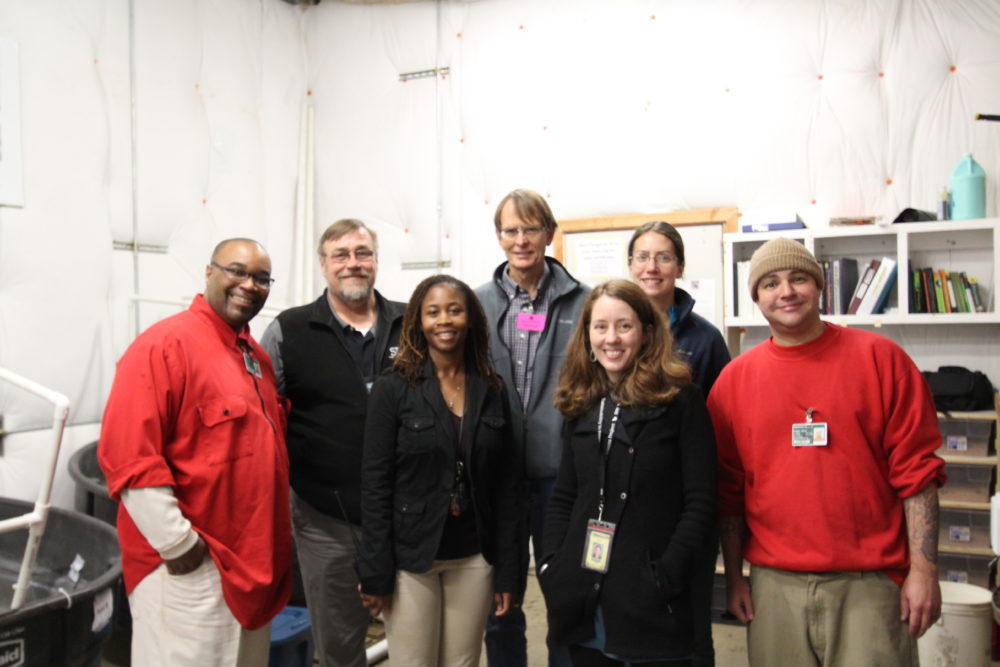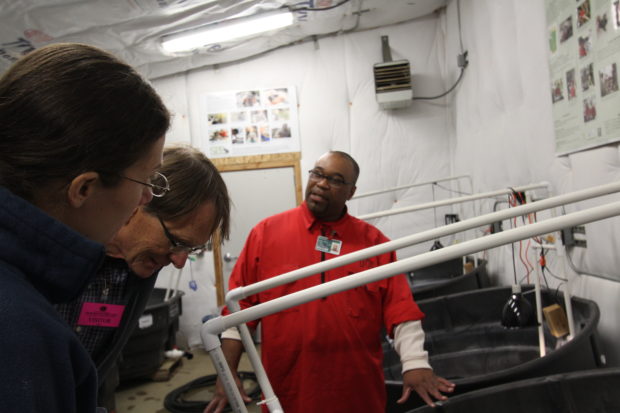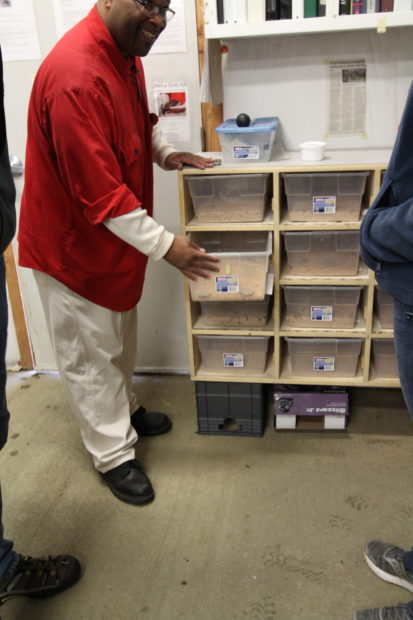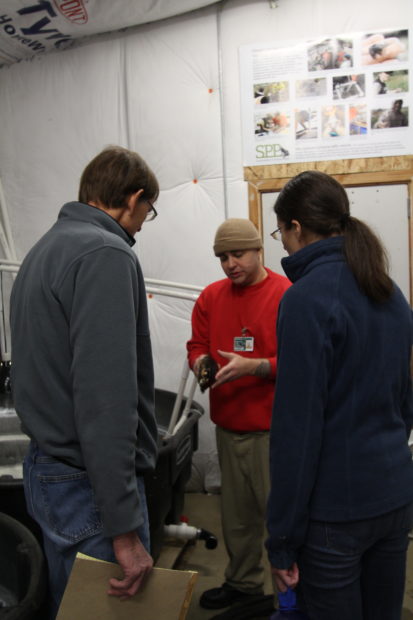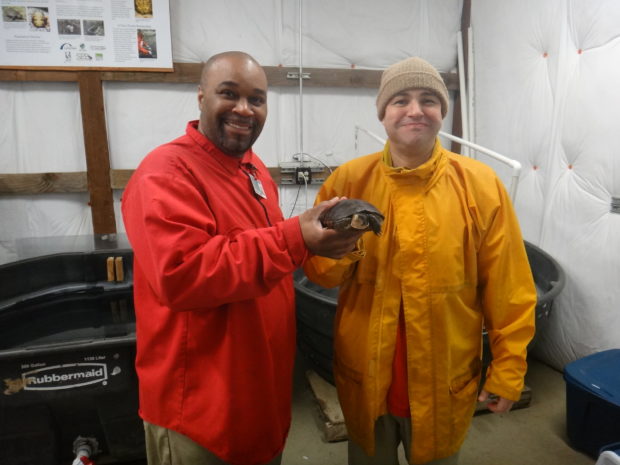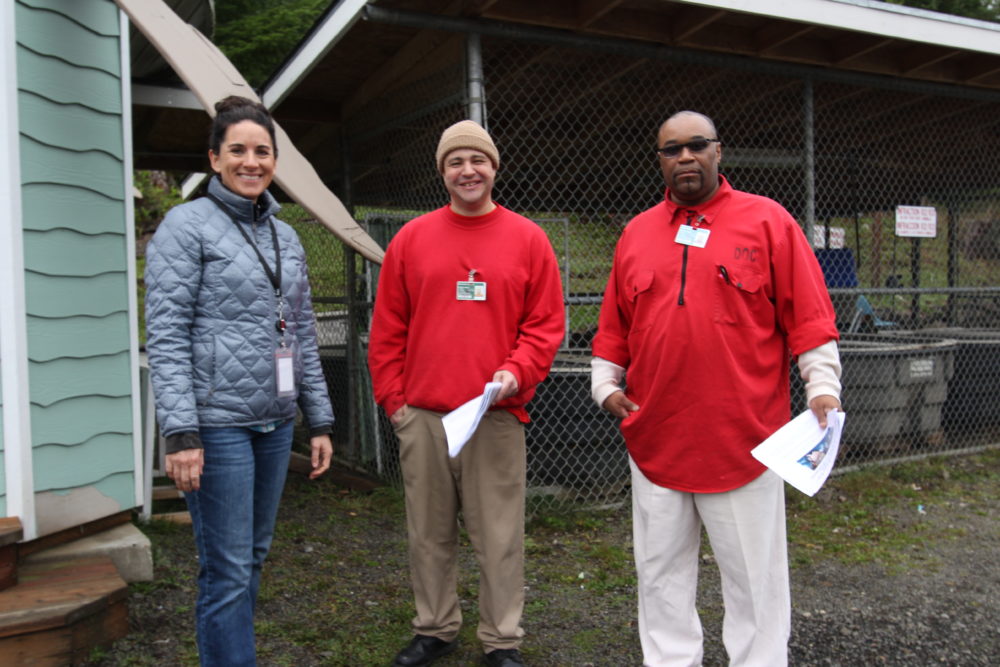At the end of May, a group of SPP and Department of Corrections (DOC) staff got the chance to tour one of the prairies that is supported by the SPP Conservation Nursery programs and the SPP Taylor’s Checkerspot Butterfly Program. The restored prairie site is located on the federally owned land of Joint Base Lewis McChord (JBLM).
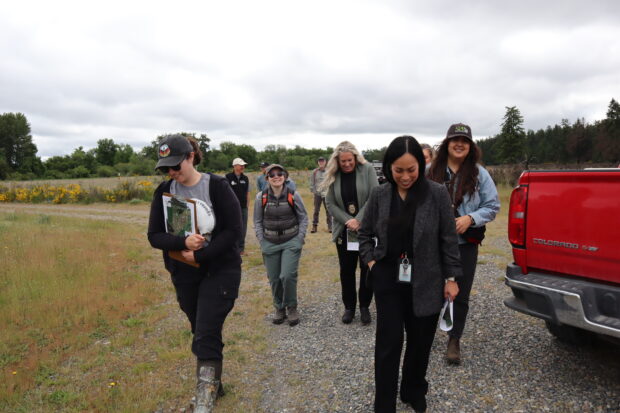
From left to right: Gina Smith (JBLM Fish & Wildlife), Mikala Waldrup (SPP), Sonja Alley (DOC), Maria Hall (DOC), and Mariana Cervantes (SPP)
Prior to colonization, Washington prairies were maintained by indigenous groups through harvesting and cultural burning. Once prevalent in the region, prairies are now considered one of Washington’s rarest ecosystems. This ecosystem has been reduced to less than 3% of its original area due to development and natural resource demand. Populations of animals that rely on the prairies, like the endangered Taylor’s Checkerspot Butterfly, have dwindled as well.
Around 90% of the remaining prairie ecosystems in the South Puget Sound are located at JBLM, where less development and periodic burns have allowed prairies to persist1. These ecosystems are considered critical habitat for Taylor’s Checkerspot butterflies and must be maintained for their survival.
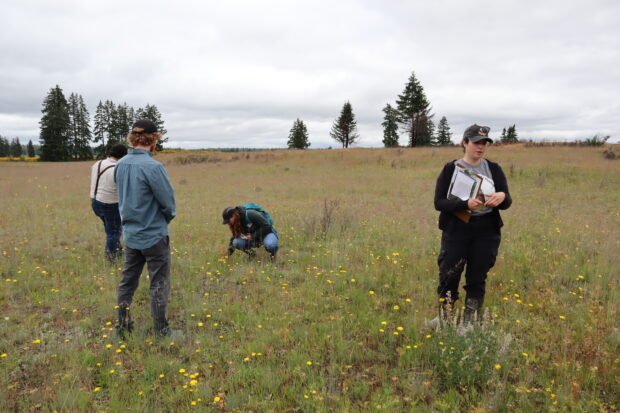
SPP staff and Gina Smith (JBLM Fish & Wildlife) step off the path in an area unlikely to have Taylor’s checkerspot eggs. Many plants in this area were likely grown by SPP’s Conservation Nursery Programs. Photo by Anneke Wilder.
On the tour, JBLM Fish and Wildlife ecologists shared their passion and knowledge of the prairie ecosystem with DOC and SPP staff. The ecologists talked about the history of the site and the work that has been done to restore habitat for the butterflies. This work includes outplanting of plugs and seeds that were grown and harvested at prison facilities, as well as releases of butterflies reared by incarcerated butterfly technicians. They stressed that none of this work would be successful without the partnership between SPP, DOC, and USFWS.
“I will never look at a prairie the same after listening to the information shared on the intricacies of each aspect of conservation work and what is needed for a healthy prairie to support the butterflies. Observing the passion of the others on the tour was inspiring!” – Kari Figueira (DOC)
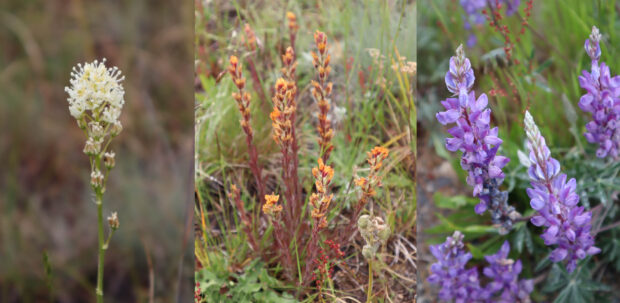
From left to right: Death camas (Zigadenus venenosus), Harsh paintbrush (Castilleja hispida) and Lupine (Lupinus sp.) Photos by Anneke Wilder.
Many prairie plants were in bloom, including lupine (Lupinus sp.), balsamroot (Balsamorhiza sagittate), death camas (Zigadenus venenosus), and paintbrush (Castilleja sp.). In many areas, visitors had to take care not to step off the main path, as eggs from the butterflies could be damaged by foot traffic. These rare opportunities to connect with the work and understand the impact of SPP programs are beneficial for all involved in the partnership.
“The experience was a full circle moment, as DOC often does not see what is beyond the fence and the positive impact that is made by initiatives with SPP. I appreciate the opportunity to walk and learn about the checkerspot in their environment with such knowledgeable experts in the area of conservation.” – Sonja Alley (DOC)
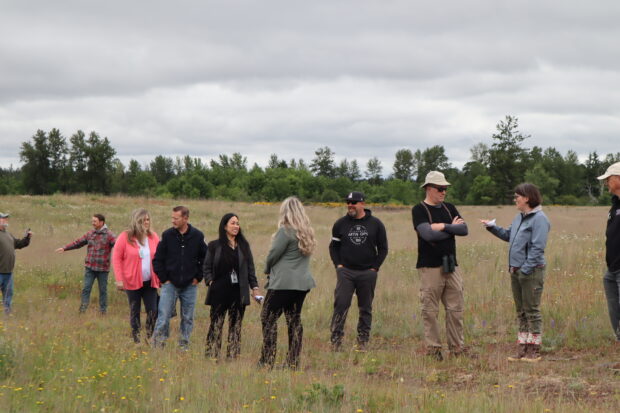
DOC staff tour the prairie accompanied by JBLM Fish and Wildlife ecologists. Photo by Anneke Wilder.
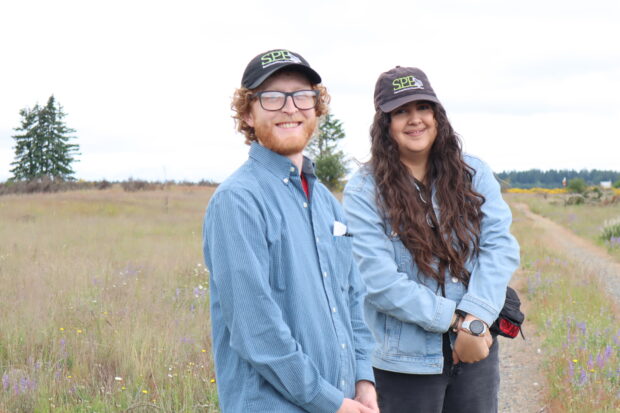
Nat Kelly (left, SPP) and Mariana Cervantes (right, SPP) are both Conservation Nursery Coordinators. Photo by Anneke Wilder.
1USFWS, 2025, https://www.fws.gov/project/joint-base-lewis-mcchord-sentinel-landscape









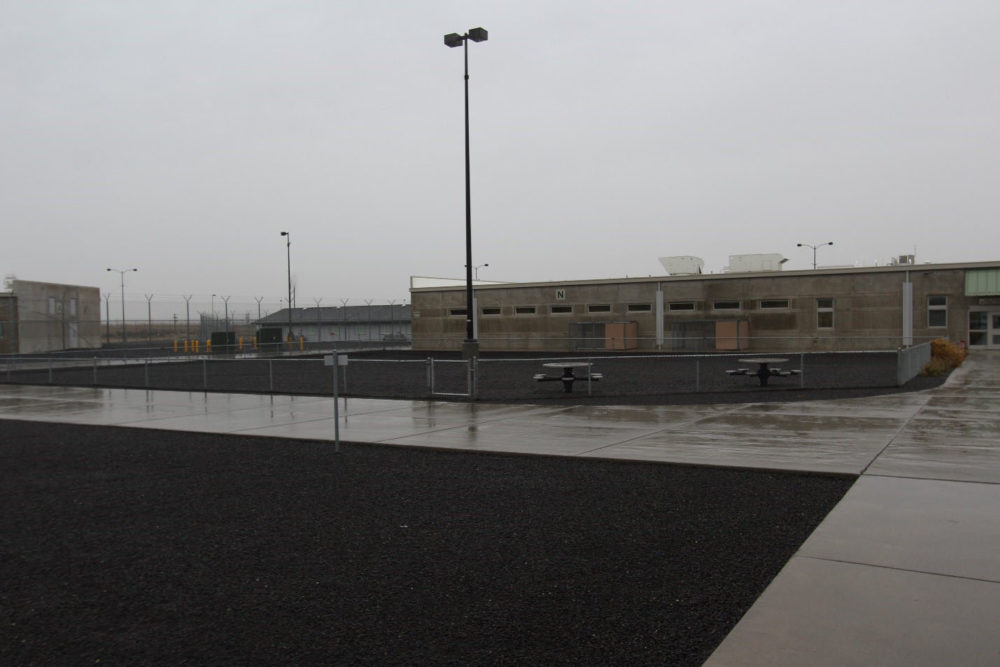
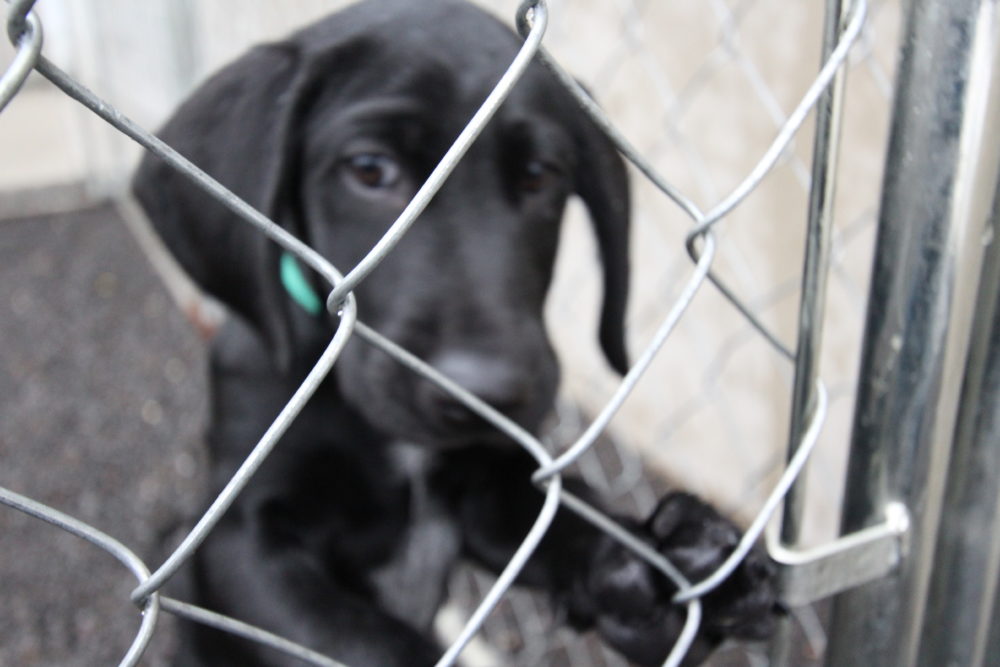
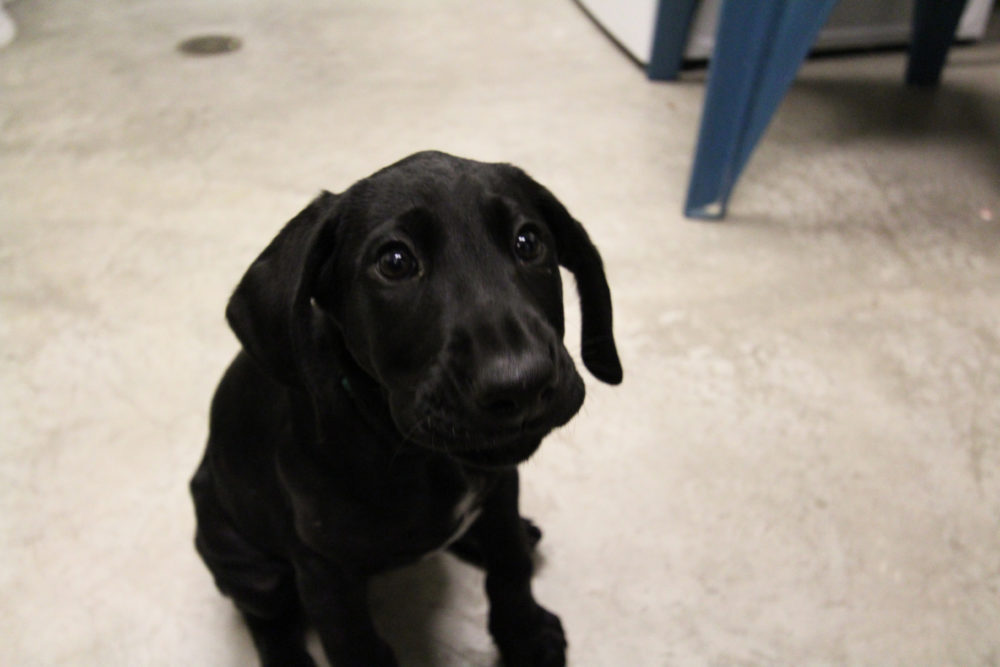
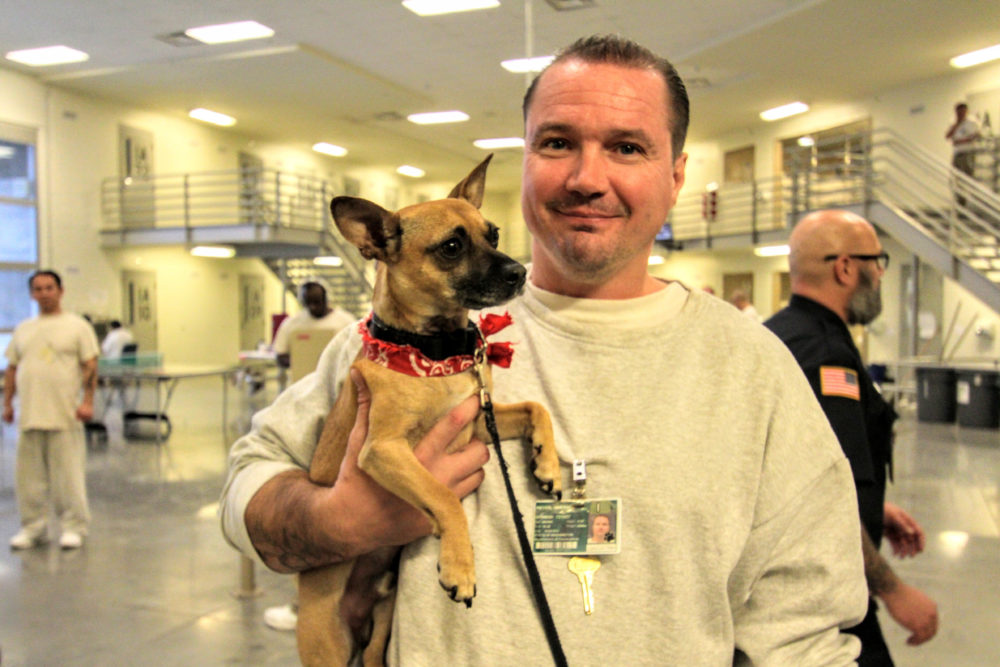
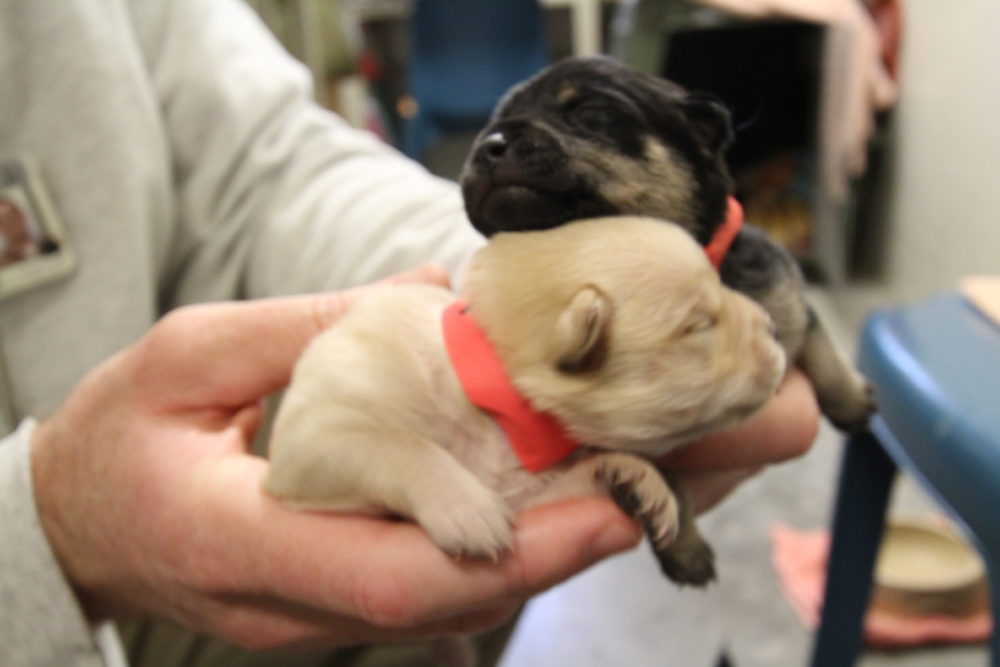
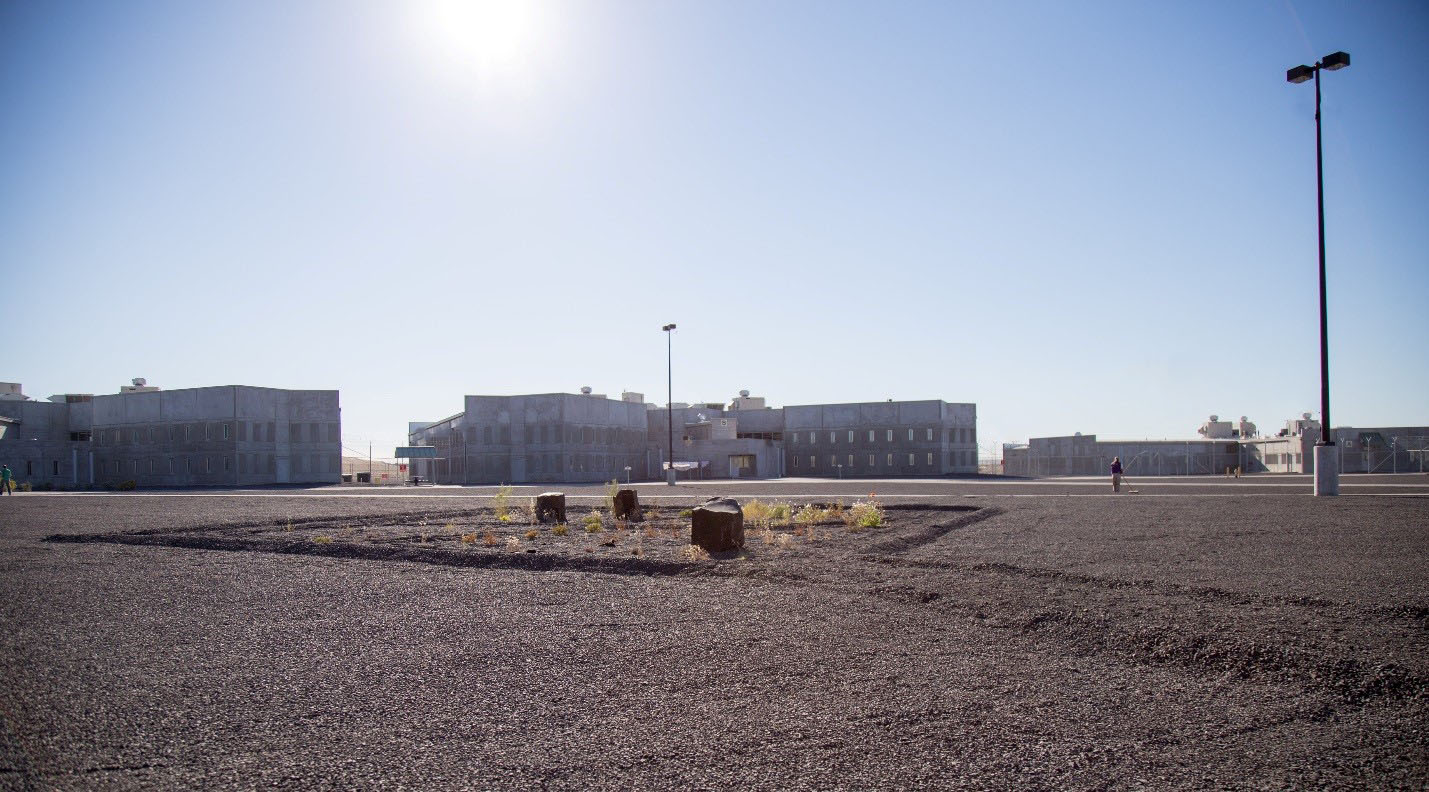 CRCC during the summer. The picture is looking at some of the units and the courtyard with a rock garden in the center. The gardens at CRCC all feature native plants and rock designs. Photo by Ricky Osborne.
CRCC during the summer. The picture is looking at some of the units and the courtyard with a rock garden in the center. The gardens at CRCC all feature native plants and rock designs. Photo by Ricky Osborne.






